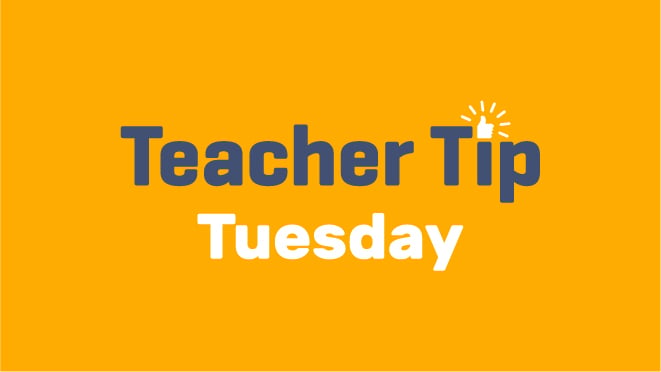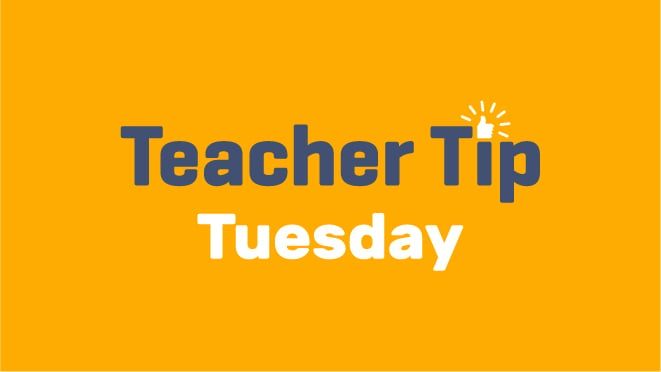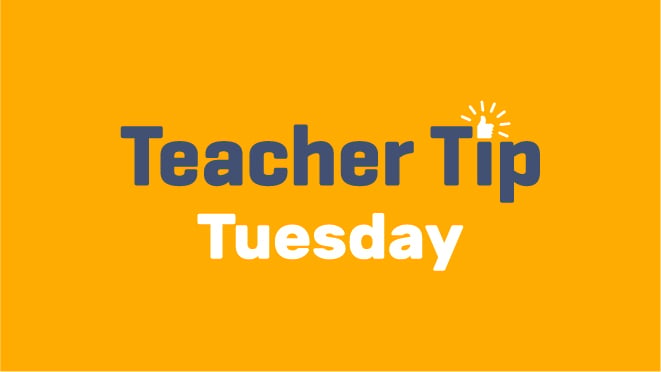How Can I Pay for That? Finding Grants to Support Learning, February 3, 2026
 Have a great idea for your classroom, school, or district but you are not sure how to fund it? You are not alone. Join us on Tuesday, February 3, 2026, from 7:00 PM to 8:15 PM ET, for How Can I Pay for That?, a practical and empowering web seminar designed to help educators and education leaders find and secure grant funding to support innovative learning opportunities.
Have a great idea for your classroom, school, or district but you are not sure how to fund it? You are not alone. Join us on Tuesday, February 3, 2026, from 7:00 PM to 8:15 PM ET, for How Can I Pay for That?, a practical and empowering web seminar designed to help educators and education leaders find and secure grant funding to support innovative learning opportunities.
 Have a great idea for your classroom, school, or district but you are not sure how to fund it? You are not alone. Join us on Tuesday, February 3, 2026, from 7:00 PM to 8:15 PM ET, for How Can I Pay for That?, a practical and empowering web seminar designed to help educators and education leaders find and secure grant funding to support innovative learning opportunities.
Have a great idea for your classroom, school, or district but you are not sure how to fund it? You are not alone. Join us on Tuesday, February 3, 2026, from 7:00 PM to 8:15 PM ET, for How Can I Pay for That?, a practical and empowering web seminar designed to help educators and education leaders find and secure grant funding to support innovative learning opportunities.
 Have a great idea for your classroom, school, or district but you are not sure how to fund it? You are not alone. Join us on Tuesday, February 3, 2026, from 7:00 PM to 8:15 PM ET, for How Can I Pay for That?, a practical and empowering web seminar designed to help educators and education leaders find and secure grant funding to support innovative learning opportunities.
Have a great idea for your classroom, school, or district but you are not sure how to fund it? You are not alone. Join us on Tuesday, February 3, 2026, from 7:00 PM to 8:15 PM ET, for How Can I Pay for That?, a practical and empowering web seminar designed to help educators and education leaders find and secure grant funding to support innovative learning opportunities.
 Have a great idea for your classroom, school, or district but you are not sure how to fund it? You are not alone. Join us on Tuesday, February 3, 2026, from 7:00 PM to 8:15 PM ET, for How Can I Pay for That?, a practical and empowering web seminar designed to help educators and education leaders find and secure grant funding to support innovative learning opportunities.
Have a great idea for your classroom, school, or district but you are not sure how to fund it? You are not alone. Join us on Tuesday, February 3, 2026, from 7:00 PM to 8:15 PM ET, for How Can I Pay for That?, a practical and empowering web seminar designed to help educators and education leaders find and secure grant funding to support innovative learning opportunities.
 Have a great idea for your classroom, school, or district but you are not sure how to fund it? You are not alone. Join us on Tuesday, February 3, 2026, from 7:00 PM to 8:15 PM ET, for How Can I Pay for That?, a practical and empowering web seminar designed to help educators and education leaders find and secure grant funding to support innovative learning opportunities.
Have a great idea for your classroom, school, or district but you are not sure how to fund it? You are not alone. Join us on Tuesday, February 3, 2026, from 7:00 PM to 8:15 PM ET, for How Can I Pay for That?, a practical and empowering web seminar designed to help educators and education leaders find and secure grant funding to support innovative learning opportunities.
Archive: State Policy Landscape in 2025 and its Implications for Science Education, June 18, 2025
Stay informed on the key policy issues that could impact your classroom and your profession. Learn how to advocate for science education and ensure your voice is heard by policymakers.
All individuals receive a certificate of participation and 100 NSTA activity points for attending the live seminar and completing the end-of-program survey. A certificate of participation is not awarded for watching the recorded version of the program.
We invite you to register for upcoming web seminars at NSTA.
Stay informed on the key policy issues that could impact your classroom and your profession. Learn how to advocate for science education and ensure your voice is heard by policymakers.
All individuals receive a certificate of participation and 100 NSTA activity points for attending the live seminar and completing the end-of-program survey. A certificate of participation is not awarded for watching the recorded version of the program.
We invite you to register for upcoming web seminars at NSTA.
Stay informed on the key policy issues that could impact your classroom and your profession. Learn how to advocate for science education and ensure your voice is heard by policymakers.
All individuals receive a certificate of participation and 100 NSTA activity points for attending the live seminar and completing the end-of-program survey. A certificate of participation is not awarded for watching the recorded version of the program.
We invite you to register for upcoming web seminars at NSTA.
Stay informed on the key policy issues that could impact your classroom and your profession. Learn how to advocate for science education and ensure your voice is heard by policymakers.
All individuals receive a certificate of participation and 100 NSTA activity points for attending the live seminar and completing the end-of-program survey. A certificate of participation is not awarded for watching the recorded version of the program.
We invite you to register for upcoming web seminars at NSTA.
Archive: 2025 STEM Policy Landscape, June 11, 2025
Join us for the second installment of the Advocacy in Action webinar series, featuring NSTA Policy Advisor James Brown, as he provides an insightful overview of key national policy trends shaping science, technology, engineering, and mathematics (STEM) education in 2025.
Brown will discuss what we can expect from the Trump Administration and the implications for the science classroom. Learn what is brewing at the national level in STEM education and what trends you can expect in federal education policy in 2025.
Join us for the second installment of the Advocacy in Action webinar series, featuring NSTA Policy Advisor James Brown, as he provides an insightful overview of key national policy trends shaping science, technology, engineering, and mathematics (STEM) education in 2025.
Brown will discuss what we can expect from the Trump Administration and the implications for the science classroom. Learn what is brewing at the national level in STEM education and what trends you can expect in federal education policy in 2025.
Join us for the second installment of the Advocacy in Action webinar series, featuring NSTA Policy Advisor James Brown, as he provides an insightful overview of key national policy trends shaping science, technology, engineering, and mathematics (STEM) education in 2025.
Brown will discuss what we can expect from the Trump Administration and the implications for the science classroom. Learn what is brewing at the national level in STEM education and what trends you can expect in federal education policy in 2025.
Join us for the second installment of the Advocacy in Action webinar series, featuring NSTA Policy Advisor James Brown, as he provides an insightful overview of key national policy trends shaping science, technology, engineering, and mathematics (STEM) education in 2025.
Brown will discuss what we can expect from the Trump Administration and the implications for the science classroom. Learn what is brewing at the national level in STEM education and what trends you can expect in federal education policy in 2025.
Archive: Science Teacher Compensation in a Competitive Landscape, June 4, 2025
This webinar will explore the critical policy issues it raises for state, local, and federal government policymakers. With its new statement, NSTA speaks to the issue of how our nation's schools should pay science teachers in a competitive economic environment. Hear from the chair of the position statement writing team about the development process and the research that informed the recommendations.
Register to attend the other programs in the series:
This webinar will explore the critical policy issues it raises for state, local, and federal government policymakers. With its new statement, NSTA speaks to the issue of how our nation's schools should pay science teachers in a competitive economic environment. Hear from the chair of the position statement writing team about the development process and the research that informed the recommendations.
Register to attend the other programs in the series:
This webinar will explore the critical policy issues it raises for state, local, and federal government policymakers. With its new statement, NSTA speaks to the issue of how our nation's schools should pay science teachers in a competitive economic environment. Hear from the chair of the position statement writing team about the development process and the research that informed the recommendations.
Register to attend the other programs in the series:
This webinar will explore the critical policy issues it raises for state, local, and federal government policymakers. With its new statement, NSTA speaks to the issue of how our nation's schools should pay science teachers in a competitive economic environment. Hear from the chair of the position statement writing team about the development process and the research that informed the recommendations.
Register to attend the other programs in the series:
Archive: Engaging Parents & Communities in OpenSciEd Science Learning, November 18, 2025
 In this session, you’ll learn how to effectively communicate the purpose and benefits of OpenSciEd to families and stakeholders.
In this session, you’ll learn how to effectively communicate the purpose and benefits of OpenSciEd to families and stakeholders.
 In this session, you’ll learn how to effectively communicate the purpose and benefits of OpenSciEd to families and stakeholders.
In this session, you’ll learn how to effectively communicate the purpose and benefits of OpenSciEd to families and stakeholders.
 In this session, you’ll learn how to effectively communicate the purpose and benefits of OpenSciEd to families and stakeholders.
In this session, you’ll learn how to effectively communicate the purpose and benefits of OpenSciEd to families and stakeholders.
 In this session, you’ll learn how to effectively communicate the purpose and benefits of OpenSciEd to families and stakeholders.
In this session, you’ll learn how to effectively communicate the purpose and benefits of OpenSciEd to families and stakeholders.
 In this session, you’ll learn how to effectively communicate the purpose and benefits of OpenSciEd to families and stakeholders.
In this session, you’ll learn how to effectively communicate the purpose and benefits of OpenSciEd to families and stakeholders.
Archive: Learn and Lead: Supporting Teachers in an OpenSciEd Classroom – Tools, Strategies, and Solutions, September 16, 2025
Implementing OpenSciEd transforms science teaching—but it also comes with a learning curve for educators.
Key Topics:
- Overview of the teacher support materials in OpenSciEd
- Common challenges in classroom implementation—and how to address them
Who Should Attend:
Implementing OpenSciEd transforms science teaching—but it also comes with a learning curve for educators.
Key Topics:
- Overview of the teacher support materials in OpenSciEd
- Common challenges in classroom implementation—and how to address them
Who Should Attend:
Implementing OpenSciEd transforms science teaching—but it also comes with a learning curve for educators.
Key Topics:
- Overview of the teacher support materials in OpenSciEd
- Common challenges in classroom implementation—and how to address them
Who Should Attend:
Implementing OpenSciEd transforms science teaching—but it also comes with a learning curve for educators.
Key Topics:
- Overview of the teacher support materials in OpenSciEd
- Common challenges in classroom implementation—and how to address them
Who Should Attend:
Archive: Learn and Lead - Lunch Edition: Supporting Teachers in an OpenSciEd Classroom – Tools, Strategies, and Solutions, September 16, 2025
Implementing OpenSciEd transforms science teaching—but it also comes with a learning curve for educators.
Key Topics:
- Overview of the teacher support materials in OpenSciEd
- Common challenges in classroom implementation—and how to address them
Who Should Attend:
Implementing OpenSciEd transforms science teaching—but it also comes with a learning curve for educators.
Key Topics:
- Overview of the teacher support materials in OpenSciEd
- Common challenges in classroom implementation—and how to address them
Who Should Attend:
Implementing OpenSciEd transforms science teaching—but it also comes with a learning curve for educators.
Key Topics:
- Overview of the teacher support materials in OpenSciEd
- Common challenges in classroom implementation—and how to address them
Who Should Attend:
Implementing OpenSciEd transforms science teaching—but it also comes with a learning curve for educators.
Key Topics:
- Overview of the teacher support materials in OpenSciEd
- Common challenges in classroom implementation—and how to address them
Who Should Attend:
Archive: Teacher Tip Tuesday: Supporting Teachers in an OpenSciEd Classroom – Tools, Strategies, and Solutions, September 9, 2025
 Implementing OpenSciEd transforms science teaching—but it also comes with a learning curve for educators.
Implementing OpenSciEd transforms science teaching—but it also comes with a learning curve for educators.
 Implementing OpenSciEd transforms science teaching—but it also comes with a learning curve for educators.
Implementing OpenSciEd transforms science teaching—but it also comes with a learning curve for educators.
 Implementing OpenSciEd transforms science teaching—but it also comes with a learning curve for educators.
Implementing OpenSciEd transforms science teaching—but it also comes with a learning curve for educators.
 Implementing OpenSciEd transforms science teaching—but it also comes with a learning curve for educators.
Implementing OpenSciEd transforms science teaching—but it also comes with a learning curve for educators.
 Implementing OpenSciEd transforms science teaching—but it also comes with a learning curve for educators.
Implementing OpenSciEd transforms science teaching—but it also comes with a learning curve for educators.
How OpenSciEd Supports All – Empowering Multilingual Learners Through Science, February 5, 2026
 Students deserve access to high-quality, meaningful science instruction—and OpenSciEd is built with multilingual learners in mind. Join us on Thursday, February 5, 2026, from 7:00 PM to 8:30 PM ET, for How OpenSciEd Supports All, a focused web seminar that explores how the OpenSciEd curriculum is designed to support multilingual learners through rich, engaging, and insightful learning experiences.
Students deserve access to high-quality, meaningful science instruction—and OpenSciEd is built with multilingual learners in mind. Join us on Thursday, February 5, 2026, from 7:00 PM to 8:30 PM ET, for How OpenSciEd Supports All, a focused web seminar that explores how the OpenSciEd curriculum is designed to support multilingual learners through rich, engaging, and insightful learning experiences.
 Students deserve access to high-quality, meaningful science instruction—and OpenSciEd is built with multilingual learners in mind. Join us on Thursday, February 5, 2026, from 7:00 PM to 8:30 PM ET, for How OpenSciEd Supports All, a focused web seminar that explores how the OpenSciEd curriculum is designed to support multilingual learners through rich, engaging, and insightful learning experiences.
Students deserve access to high-quality, meaningful science instruction—and OpenSciEd is built with multilingual learners in mind. Join us on Thursday, February 5, 2026, from 7:00 PM to 8:30 PM ET, for How OpenSciEd Supports All, a focused web seminar that explores how the OpenSciEd curriculum is designed to support multilingual learners through rich, engaging, and insightful learning experiences.
 Students deserve access to high-quality, meaningful science instruction—and OpenSciEd is built with multilingual learners in mind. Join us on Thursday, February 5, 2026, from 7:00 PM to 8:30 PM ET, for How OpenSciEd Supports All, a focused web seminar that explores how the OpenSciEd curriculum is designed to support multilingual learners through rich, engaging, and insightful learning experiences.
Students deserve access to high-quality, meaningful science instruction—and OpenSciEd is built with multilingual learners in mind. Join us on Thursday, February 5, 2026, from 7:00 PM to 8:30 PM ET, for How OpenSciEd Supports All, a focused web seminar that explores how the OpenSciEd curriculum is designed to support multilingual learners through rich, engaging, and insightful learning experiences.
 Students deserve access to high-quality, meaningful science instruction—and OpenSciEd is built with multilingual learners in mind. Join us on Thursday, February 5, 2026, from 7:00 PM to 8:30 PM ET, for How OpenSciEd Supports All, a focused web seminar that explores how the OpenSciEd curriculum is designed to support multilingual learners through rich, engaging, and insightful learning experiences.
Students deserve access to high-quality, meaningful science instruction—and OpenSciEd is built with multilingual learners in mind. Join us on Thursday, February 5, 2026, from 7:00 PM to 8:30 PM ET, for How OpenSciEd Supports All, a focused web seminar that explores how the OpenSciEd curriculum is designed to support multilingual learners through rich, engaging, and insightful learning experiences.
 Students deserve access to high-quality, meaningful science instruction—and OpenSciEd is built with multilingual learners in mind. Join us on Thursday, February 5, 2026, from 7:00 PM to 8:30 PM ET, for How OpenSciEd Supports All, a focused web seminar that explores how the OpenSciEd curriculum is designed to support multilingual learners through rich, engaging, and insightful learning experiences.
Students deserve access to high-quality, meaningful science instruction—and OpenSciEd is built with multilingual learners in mind. Join us on Thursday, February 5, 2026, from 7:00 PM to 8:30 PM ET, for How OpenSciEd Supports All, a focused web seminar that explores how the OpenSciEd curriculum is designed to support multilingual learners through rich, engaging, and insightful learning experiences.


